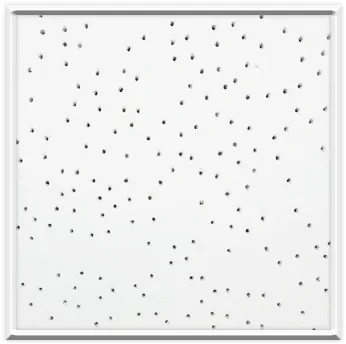- Afrikaans
- Albanian
- Amharic
- Arabic
- Armenian
- Azerbaijani
- Basque
- Belarusian
- Bengali
- Bosnian
- Bulgarian
- Catalan
- Cebuano
- Corsican
- Croatian
- Czech
- Danish
- Dutch
- English
- Esperanto
- Estonian
- French
- German
- Greek
- Hindi
- Indonesian
- irish
- Italian
- Japanese
- Korean
- Lao
- Malay
- Myanmar
- Norwegian
- Norwegian
- Polish
- Portuguese
- Romanian
- Russian
- Serbian
- Spanish
- Swedish
- Thai
- Turkish
- Ukrainian
- Uzbek
- Vietnamese
Dis . 09, 2024 16:31 Back to list
Rated Ceiling Access Panels for Enhanced Safety and Accessibility in Commercial Spaces
Understanding Rated Ceiling Access Panels Importance, Functions, and Benefits
When it comes to construction and architectural design, every element plays a vital role in both functionality and safety. Among the many components that contribute to these factors are rated ceiling access panels. These specialized panels are crucial for accessing areas above ceilings, such as mechanical, electrical, and plumbing installations, while ensuring that fire ratings and building codes are adhered to.
What Are Rated Ceiling Access Panels?
Rated ceiling access panels are designed to provide a secure and compliant access point to spaces above a ceiling. Unlike standard access panels, these are constructed to meet specific fire-resistance ratings, which means they can withstand high temperatures for a certain period without compromising the integrity of the surrounding structure. Typically, the fire ratings are classified in terms of time—commonly one hour, two hours, or more—indicating the length of time they can resist fire before failing.
Importance in Construction
The importance of rated ceiling access panels cannot be understated. One of their primary functions is to allow maintenance personnel easy access to critical systems while maintaining safety and compliance with building codes. For instance, in commercial buildings, many mechanical and electrical systems are located in ceiling spaces. Having access panels means that repairs and inspections can be conducted efficiently without the need to demolish sections of the ceiling, which can be time-consuming and costly.
Moreover, these access panels are integral in maintaining the building’s fire safety measures. In the event of a fire, it's crucial for building elements to work in tandem to prevent the spread of fire and smoke. Rated access panels act as barriers that contribute to the overall fire-resistance rating of the building. They help compartmentalize areas, which is especially important in large structures where a fire could potentially spread rapidly if not contained.
Design and Material Considerations
Rated ceiling access panels come in various designs and materials, making them suitable for diverse applications. Common materials include steel and aluminum, which not only provide strength but also enhance fire resistance. The panels are often insulated to help improve energy efficiency and further enhance their fire-retardant properties.
When selecting a rated access panel, it’s essential to consider the specific requirements of the space it will be installed in. This includes the fire-rating needed, size, and any additional features such as sound insulation or airtight seals. Manufacturers usually provide a range of products to meet the diverse needs of commercial, industrial, and residential applications.
rated ceiling access panels

Installation and Maintenance
Proper installation is critical to the functionality and effectiveness of rated ceiling access panels. It is recommended that installation be carried out by professionals who understand building codes and fire safety requirements. Panels should be flush with the ceiling surface and sealed correctly to maintain their fire rating.
Ongoing maintenance is also essential to ensure that these access points continue to function as intended. Regular inspections can identify wear and tear, ensuring that the panels remain secure and effective at separating different fire-rated areas.
Benefits of Rated Ceiling Access Panels
1. Safety and Compliance Ensuring that the access points in a building meet fire-resistance ratings is crucial for safety and compliance with local building codes.
2. Efficiency Rated access panels streamline maintenance processes, allowing for quick and easy access to essential systems without extensive disruption.
3. Versatility These panels are available in various designs and materials, making them suitable for different environments and aesthetic considerations.
4. Cost-Effectiveness While the initial investment in rated ceiling access panels may be higher than standard panels, their ability to enhance safety and reduce maintenance time can lead to significant cost savings in the long run.
Conclusion
Rated ceiling access panels serve a critical role in modern construction, balancing accessibility, safety, and compliance with building regulations. Their design and functionality ensure that maintenance can be conducted effectively while adhering to essential fire safety standards. As buildings become more complex, the importance of these access solutions will continue to grow, making them an indispensable component of architectural design.
-
Transform Interiors with PVC Gypsum Ceiling: A Stylish, Durable, and Moisture-Resistant SolutionNewsMay.19,2025
-
The Smart Interior Upgrade: Discover the Durability and Versatility of Gypsum Ceiling Access Panel SolutionsNewsMay.19,2025
-
The Smart Choice for Interior Design: Discover the Value of PVC Gypsum Ceiling SolutionsNewsMay.19,2025
-
Mineral Fiber Ceiling Tiles: The Smart Blend of Performance and AestheticsNewsMay.19,2025
-
Mineral Fiber Ceiling Tiles: The Superior Choice Over Gypsum for Sound and Fire SafetyNewsMay.19,2025
-
Mineral Fiber Ceiling Tiles: Eco-Friendly Strength and Style for Every CeilingNewsMay.19,2025







